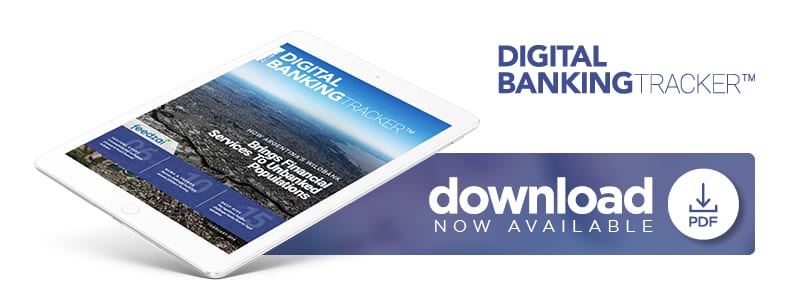Deep Dive: How Challenger Banks Navigate Licensing Obstacles

Many challenger banks pursue charters to establish themselves as trustworthy institutions and compete directly with legacy FIs. Yet, pursuing charters can be time-consuming, and comes with plenty of pitfalls — some of which can surface even after a charter is successfully acquired. The following Deep Dive looks at the benefits and risks challenger institutions face during the pursuit of a charter.
 Challenger banks first emerged on the U.K. financial services scene in 2015, and were considered minor competitors to more established legacy players. Since then, these types of institutions — also known as upstart banks and neobanks — have matured, evolved and increased their reaches. As such, challenger banks like Atom Bank, Starling Bank and Monzo are no longer a phenomenon unique to the U.K.
Challenger banks first emerged on the U.K. financial services scene in 2015, and were considered minor competitors to more established legacy players. Since then, these types of institutions — also known as upstart banks and neobanks — have matured, evolved and increased their reaches. As such, challenger banks like Atom Bank, Starling Bank and Monzo are no longer a phenomenon unique to the U.K.
Digital-only institution N26, based in Germany, has reportedly tripled its membership to roughly 2.3 million since last year. Several new challenger banks have also emerged in Latin America, such as Neon, Nubank, Nequi and Ualá. These financial players provide seamless, smartphone-first access to banking tools, while also helping unbanked and underbanked residents (often located in remote areas) access basic banking services.
New financial regulations have set the stage for more of these institutions to emerge, further challenging traditional banks’ roles in the financial services market. Challenger banks must gain the appropriate licenses to legally operate as financial institutions (FIs), which is a challenge of its own. The following Deep Dive delves into how challenger banks can obtain licenses, and examines the requirements they must meet to do so.
How Challenger Banks are Poised for Growth
Some recent regulatory developments have paved the way for the proliferation of challenger banks. These FIs were once seen as novelties in the financial services landscape. Under the revised Payment Services Directive (PSD2) regulation that went live in Europe last year, banks are required to give third-party providers (TPPs) direct access to information relating to consenting customers’ payment accounts. In addition, the U.K.’s Open Banking initiative will boost competition in the market by requiring the nation’s largest banks to use application programming interfaces (APIs) that grant TPPs access to customers’ data.
Both PSD2 and Open Banking allow challenger banks to gain insights into customers’ banking habits and preferences, enabling them to develop innovative solutions.
Another factor that’s expanding the reach of challenger banks in Europe is the European Economic Area (EEA) passport. The EEA passport allows firms that are licensed in one of the 27 EU member states to provide financial services in the remaining states without requiring additional authorization. N26 has used the EEA passport to expand into 17 countries.
The Long Road to Becoming a Challenger Bank
These regulations are likely to encourage new challenger institutions to join the field. Before they do, however, they must meet a long list of regulatory requirements.
Several of the U.K.’s most popular challenger banks — including Atom Bank, Tandem Bank and Starling Bank — chose to pursue full charters. To that end, they developed products that required charters to operate. In doing so, these banks established themselves as trustworthy institutions among consumers who were hesitant to fully trust non-legacy banks.
After these institutions register with the U.K.’s Financial Conduct Authority (FCA), it can take up to two years to complete the charter process, delaying the release of products and costing them potential customers. On top of that, these procedures cost a lot of money. Atom and Tandem spent approximately $18.58 million and $18.87 million, respectively, to pursue charters.
Challenger banks can also lose their charters, which inevitably creates additional costs. Tandem, for example, had its charter revoked after it failed to secure sufficient funding from investors. It was able to restore its charter after purchasing the banking division of U.K. department store Harrods, which cost a significant amount of money and time.
Revolut, a challenger institution that offers a digital currency exchange app, took a different approach. It opted for an eMoney license, which can be acquired more easily than a charter. Revolut increased its footprint across Europe with the EEA passport, and it partnered with other FinTech firms to quickly launch its product. Since it did not have to wait for a charter, Revolut onboarded significantly more customers than other challenger banks that were still waiting for approval.
Europe is not the only region experimenting with Open Banking. Similar efforts are underway in the Middle East, and Australia is preparing for its own Open Banking experiment later this year. New financial regulations may be opening doors for challenger banks to reach new consumers. Still, these institutions face the difficult choice of whether pursuing a charter is worth the risk of missing out on early adoption.
Ultimately, challenger banks must consider their different approaches so they can live up to their namesakes and throw down a challenge to legacy banks.
